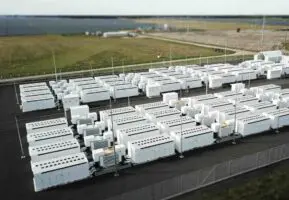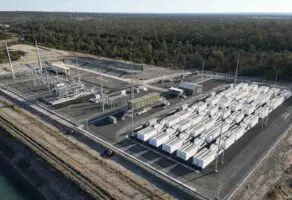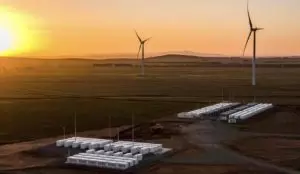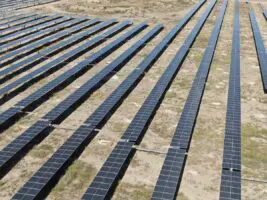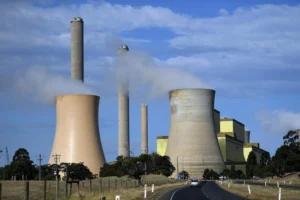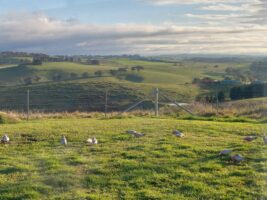Big batteries in California are now the biggest source of supply in California’s evening demand peaks for periods of three hours or more, as the dramatic energy transition in one of the world’s biggest state grids continues apace.
The emergence of big batteries as the dominant player in the evening demand peaks, the falling influence of gas and the growing share of bulk power from wind, solar and water have been the significant developments in the world’s fifth biggest economy this year.
On Thursday in California, battery storage emerged as the biggest source of supply into the state grid’s evening demand peak at 7.05pm, around about the time it has done on many evenings in the past month. It’s when the last of the solar power that dominates during the day starts to peter out.
This time, however, battery storage remained the number one supplier in the evening peak for more than three hours, until 10.10pm – reflecting the fact that California, unlike many other state grids such as South Australia, has more four-hour batteries already built.
Gas, the previous king of the evening peak, did not rise about fourth position in the supply table on this occasion. Its contribution to the evening peak has – on average – halved this past month compared to the same period last year, as we reported last week.
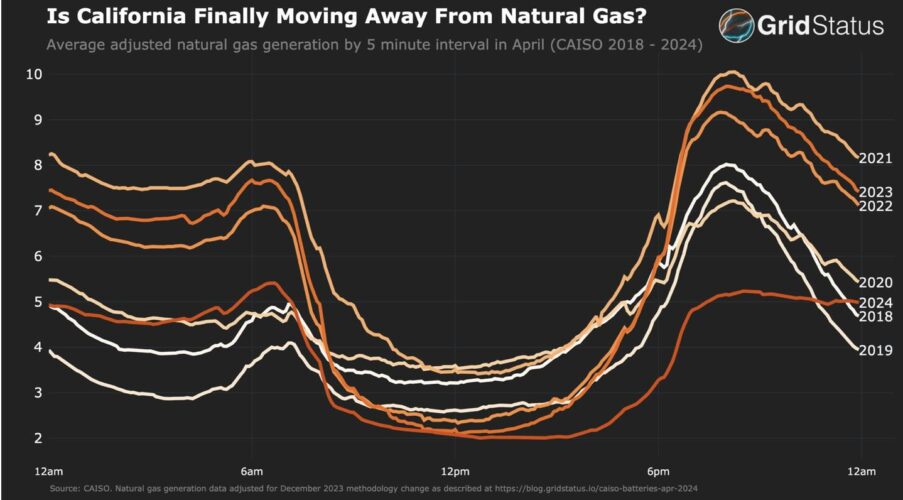
Battery storage, as we have mentioned, has also helped flatten the so-called solar duck in the middle of the day as it soaks up excess solar to store the output for use in those evening peaks.
Battery output also hit a new peak of 7.52 GW in California last week, more than 1.4 GW above the record when they started tumbling anew at the start of April, and more than double its record peak output from a year ago.
The other remarkable element of the California transition is the run of days when solar, wind and water (hydro) contribute more than 100 per cent of state demand for at least part of the day, and up to nearly 10 hours on occasions.
According to Stanford University’s Mark Jacobsen, that run has now extended to 44 consecutive days and 68 of the last 73 days, with the share of wind, solar and water reaching more than 160 per cent of local demand on occasions.


